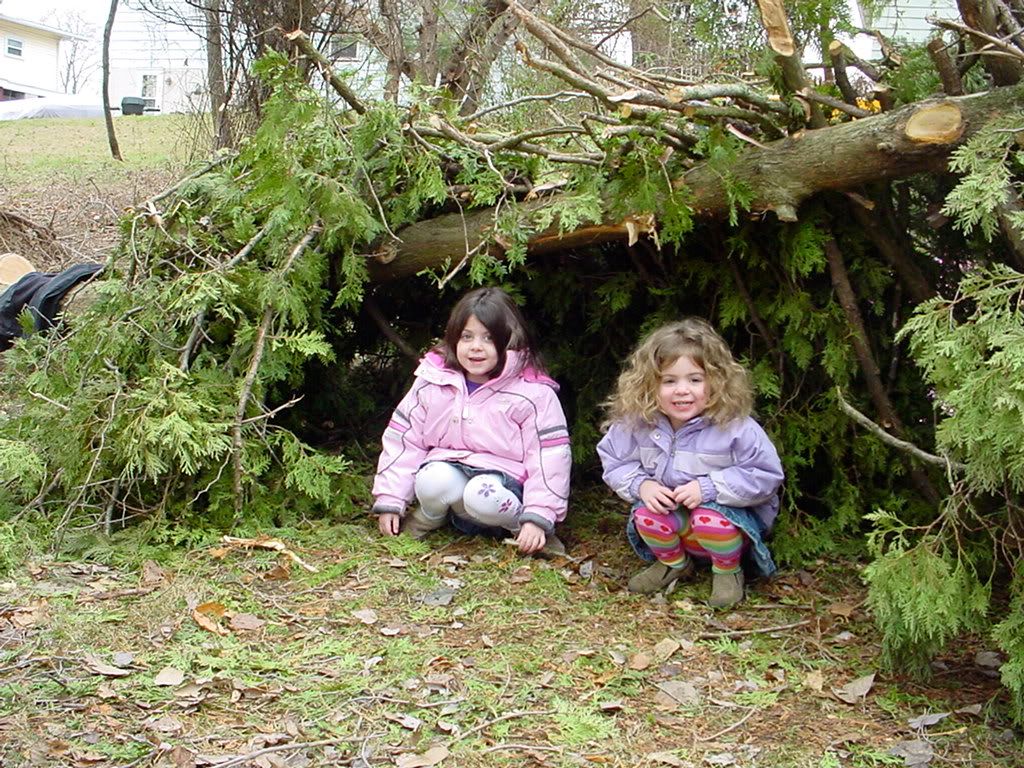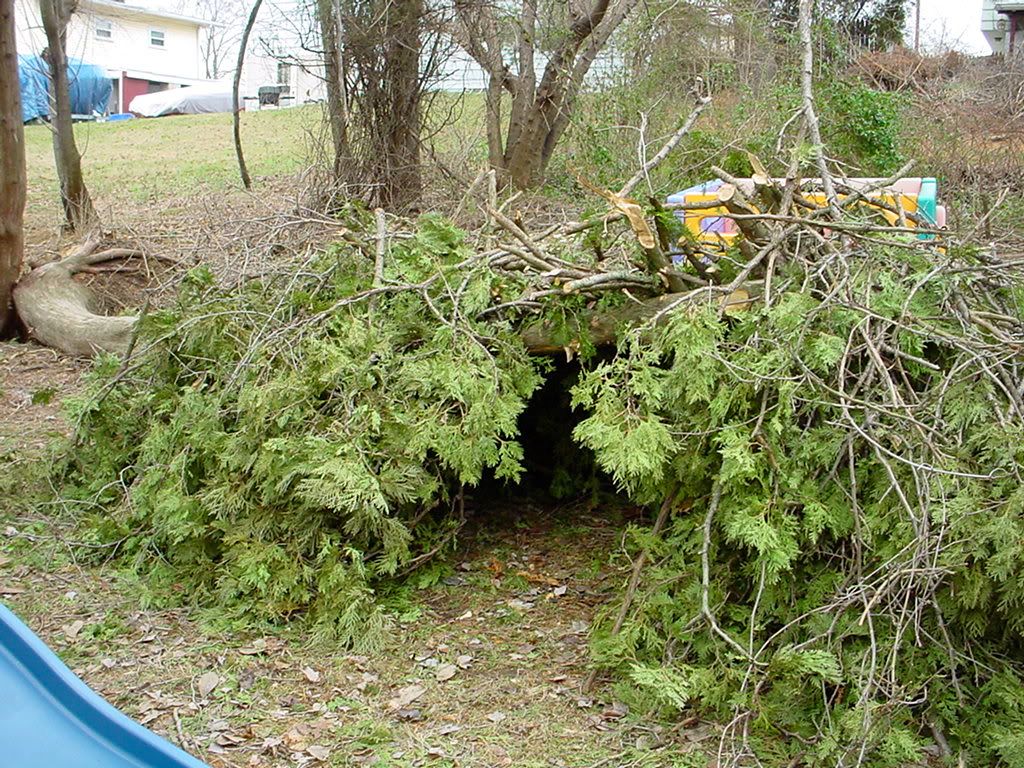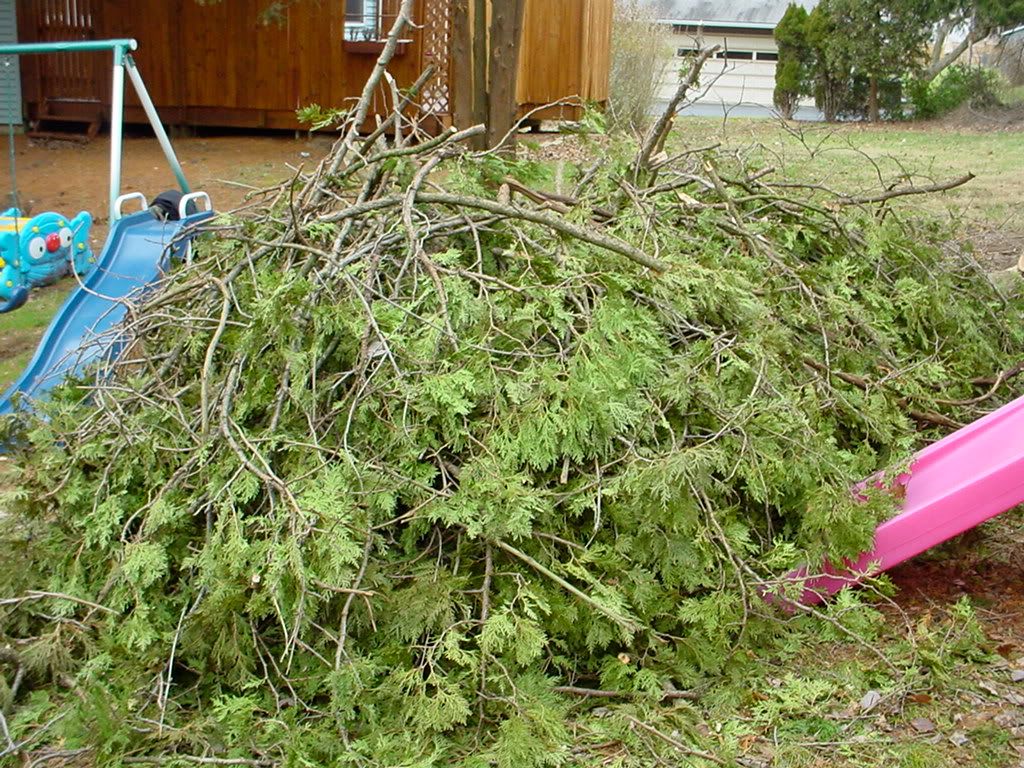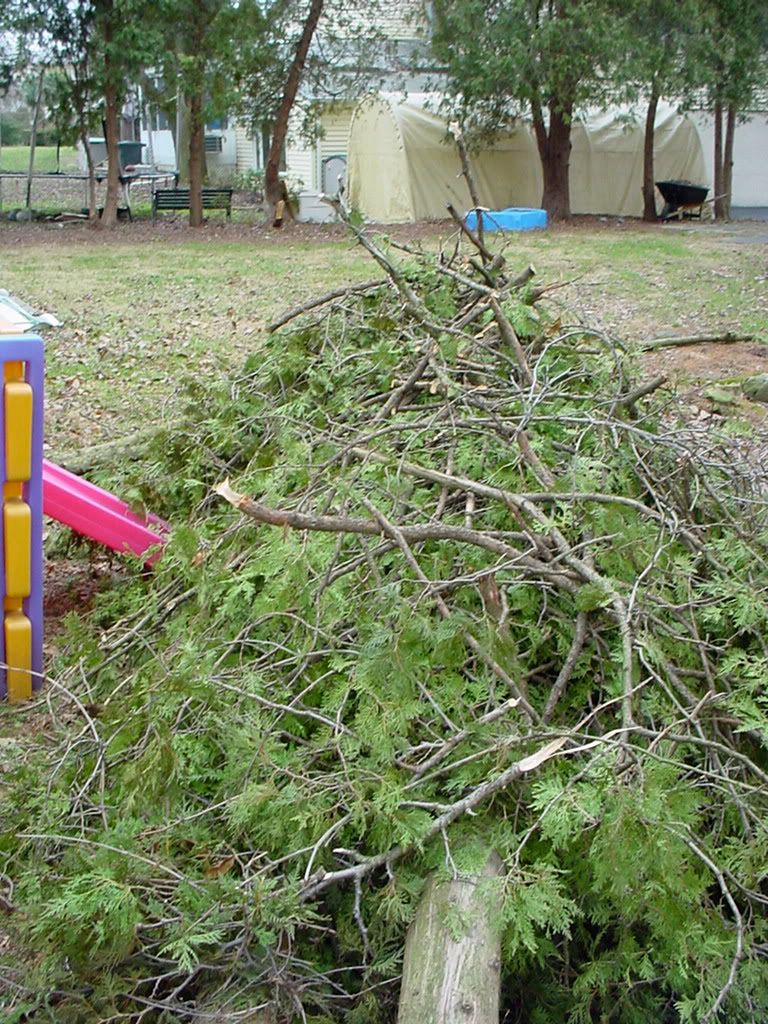Monday, January 14, 2008
Sunday, January 06, 2008
Follow up on Debris Shelter
We got a light rain last night which allowed me to see how good of a shelter I made yesterday. Pretty good as it turns out. I went out back this morning and checked the ground underneath the shelter to see how damp it was.
Near the entrance it was damper than it was yesterday, but back underneath it was about the same as yesterday afternoon. An "eve" extending over the entrance would've helped.
Another way to improve this kind of shelter is to use heavy duty contractor garbage bags or drum liners. Two or three of these weigh hardly anything and take up little room in your woods kit. You can use one as a tarp over the shelter frame for additional waterproofing and wind blocking, with another as a ground sheet. Arranged right, you could even use one as a door to keep rain and wind out of the entrance. I have one such bag tied to the outside of my possibles bag. I'll be adding a couple more.
Saturday, January 05, 2008
Backyard Bushcraft: Shelter Making
Last month, one of the arborviate trees in my yard blew down during a wind storm. Today I went out back to cut it up for disposal, when it occurred to me that I had the perfect opportunity to practice making a debris shelter. So, with golok and bow saw in hand, I made a debris shelter.
My daughters spent the morning out with their grandmother. When they got home they wanted to see what Daddy was doing in the backyard. They helped out a little before going inside for their nap. Here's a pic of them in the unfinished shelter.

Finally, a few shots of the shelter from different angles.





Finally, a few shots of the shelter from different angles.




If one got stuck out in the woods without a tent, e.g., due to a plane crash, car running off the road, loss of gear, etc., this kind of shelter can make the difference between making it and dying. It can provide insulation from the cold, if made thick enough can block rain and snow, and will help to block the wind. Just like I used a tree blown down in my backyard, you can often find trees in the woods that have blown down and which can be used as the basis of your shelter. For example, note how I used the tree as a ridge pole and leaned other branches against it.
Make sure that when covering the structure, you orient your thatch so that the twigs, leaves, or pine needles are pointed downwards. Also, start at the bottom then work your way up, overlapping the upper branches over the lower. Doing so encourages rain and meltwater to drain outside the shelter.
Don't make the shelter too large. Doing so will require more effort and will be harder to keep warm. On the other hand, as long as it's structurally sound it's probably impossible to put too much thatch on it. The more you use the more weather resistant it should be.
Make sure that when covering the structure, you orient your thatch so that the twigs, leaves, or pine needles are pointed downwards. Also, start at the bottom then work your way up, overlapping the upper branches over the lower. Doing so encourages rain and meltwater to drain outside the shelter.
Don't make the shelter too large. Doing so will require more effort and will be harder to keep warm. On the other hand, as long as it's structurally sound it's probably impossible to put too much thatch on it. The more you use the more weather resistant it should be.
Be careful about is locating the shelter where it'll have good drainage and where it's unlikely to have anything else fall on top of it.
Finally, this kind of shelter can be hard to see from afar. If you're trying to be found keep this in mind. If you're trying not to be found, so much the better.
Subscribe to:
Posts (Atom)





